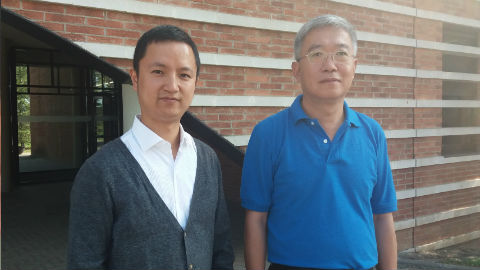"Your country is a model for inclusive education"

10/10/2017
A group of 40 professors from different Chinese universities visited the UAB campus from 2 to 6 October as part of the European project Promoting inclusive education through curriculum development and teacher education in China (INCLUTE), with the objective of discovering apsects about inclusive education in primary education classrooms, and at the same time receive training in an area highly underdeveloped in schools in China.
Apart from the UAB, the project inclused the participating of three other European universities and four Chinese universities: Southwest University (project coordinator), Guanxi Normal University, Sichuan Normal University and the Tibet University for Nationalities.
-What have you learned during your stay at the UAB? You also visited three primary school centres.
- Quinyi Tan (QT)- All of the schools we visited are inclusive, accessible, sustainable, in terms of the environment, in education strategies, even in their philosophy of education, they have all the necessary factors to implement an inclusive education model. In China however we are at the very first stages of this. According to the Unesco, Spain is a role model in the development of inclusive education. That is why it has been an excellent opportunity to come here and learn about the things you do.
-Jiali Yao (JY)- We were very impressed by all the things we saw at the schools. We saw some very important differences. The first was the number of students per class: in China there are minimum 45-50 students and sometimes there can be more than 60. Here you only have some 15-20 students per class. Another notable difference is that both students and teachers seemed to be more relaxed, freer, they can more around at their ease… our education in China is much more formal and strict.
QT- The atmosphere in the ckassroom is definitely different; in China it is very strict. For example, the children cannot speak out of turn or move around. There is even more room in the classroom for kids to mover around.
-Is it possible to apply everything you have seen here in China's schools?
JY -Yes, but the economic and cultural conditions make it difficult; there are a series of limitations which make it impossible to do immediately. Our governments are taking measures to reduce classroom rations, and that would help in implementing some of these measures. That would also create a more relaxed classroom. At the university, for example, this is beginning to be seen in some of the academic programmes.
-Are students with disabilities assimilated into the education system?
JY- The children who have any type of disability go to special schools, not the normal ones. It would be nice to integrate them into the general classroom, as I saw that you do here, but we would need more support, more teachers. It is difficult to do it now in our country. Here we saw that sometimes in a classroom there is a teacher and another person helping kids who may have special needs, but we only have one teacher per class and the classes are twice as large as they are here.
-Schools in China teach their girls and boys to be very competitive. You are always in the top positions in all of the rankings.
-The schools train competitive students because we believe that in the future, if you want to go to a good university and have a good job, you must be competitive. However, that does not erase the fact that in Asian countries there is a much greater population and our schools are more overcrowded than we would like them to be. But this is our reality.
-Is it good for primary school children to be competitive?
QT- On the one hand it is a good thing and, on the other, it is not very suitable. Competitiveness can sometimes be a barrier or obstacle in the education of a child. Exams and evaluations can be a hindrance to many students.
JY- Here you have a very nice philosophy in which children are not the ones to adapt to the school, rather it is the school that adapts to the chold. And another factor I would highlight is that the education policies and strategies are made to include all children.
-Is there any aspect of the Chinese education system which you consider should be taken into account?
JY- China is a country with much history, with a philosophy that fundamentally defends the same ideas as inclusive education: equal respect for all students or teaching while taking into account each individual, to name two. I am referring to the philosophy of Confucius. All Chinese education is based on his ideas, as is the Chinese culture and society. And that is the great legacy this Chinese philosopher gave us, not only to China, but to the whole of humanity.